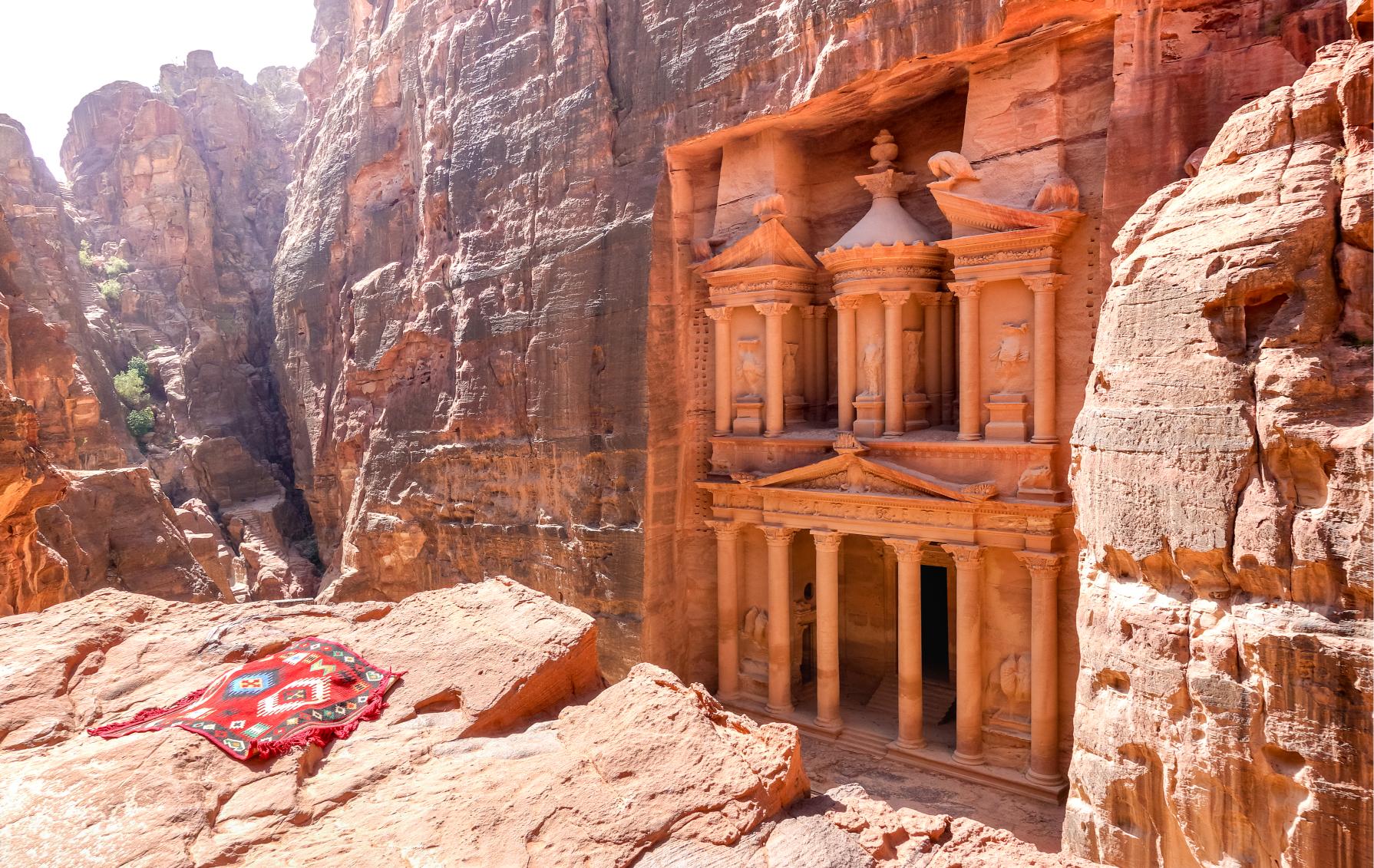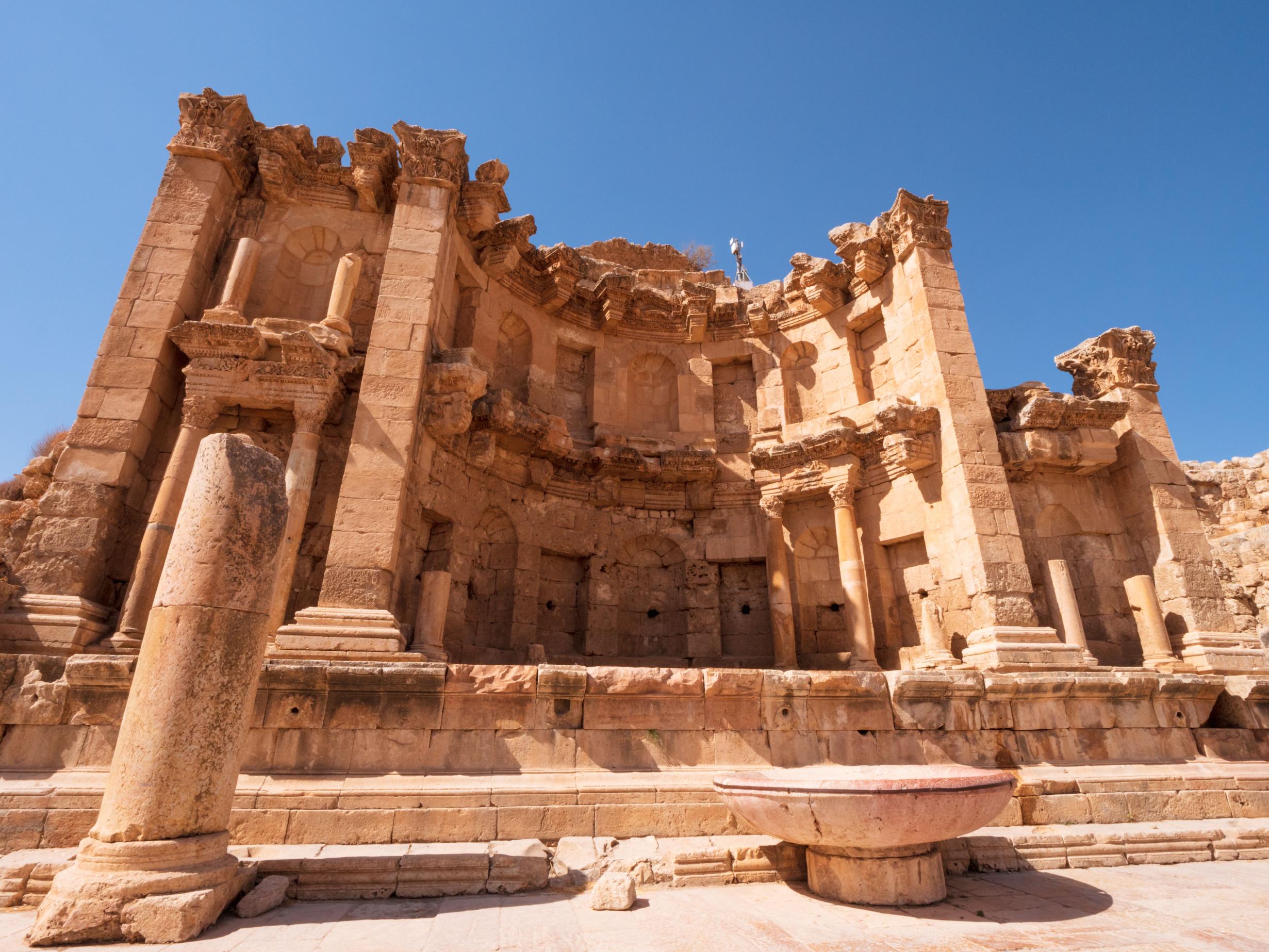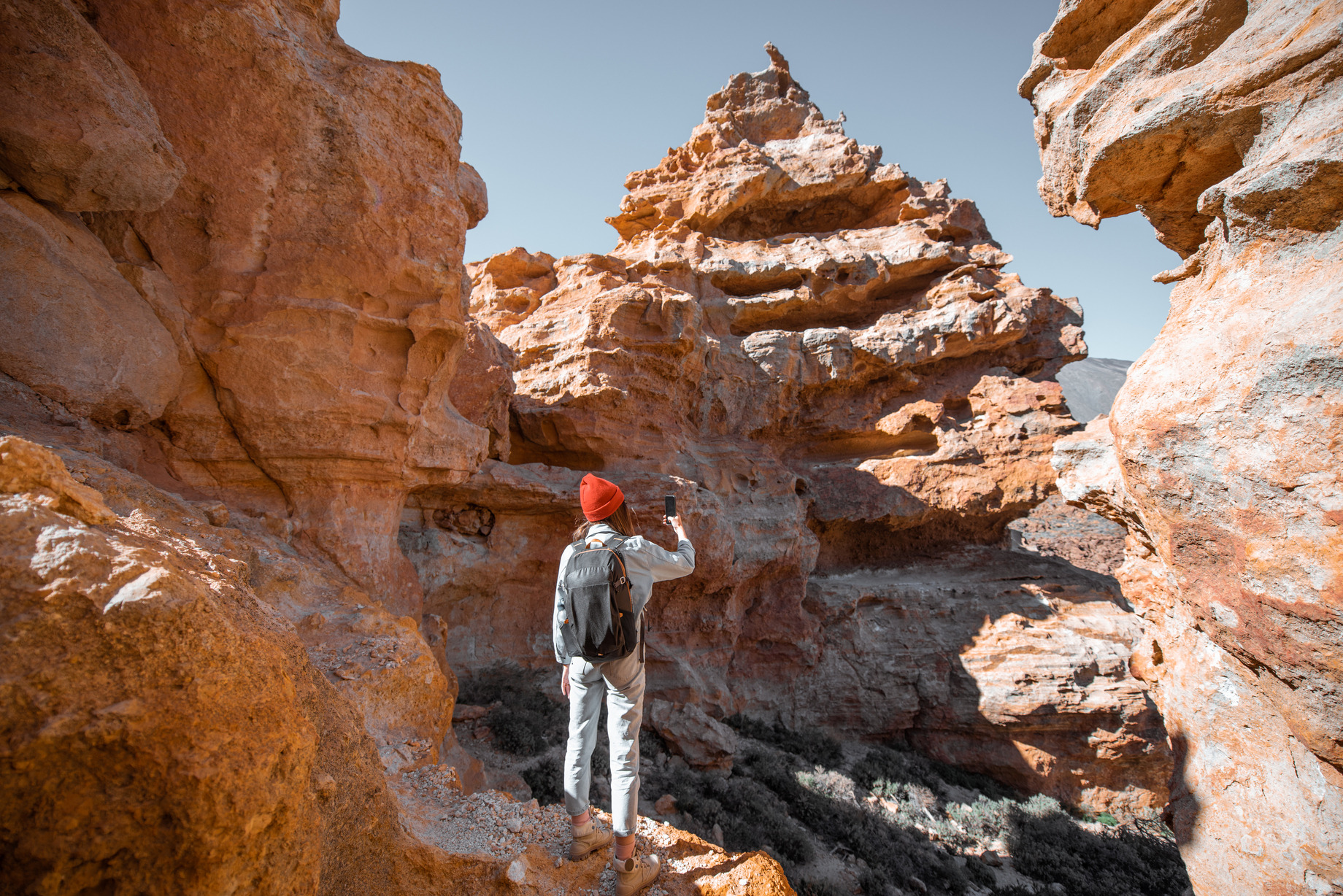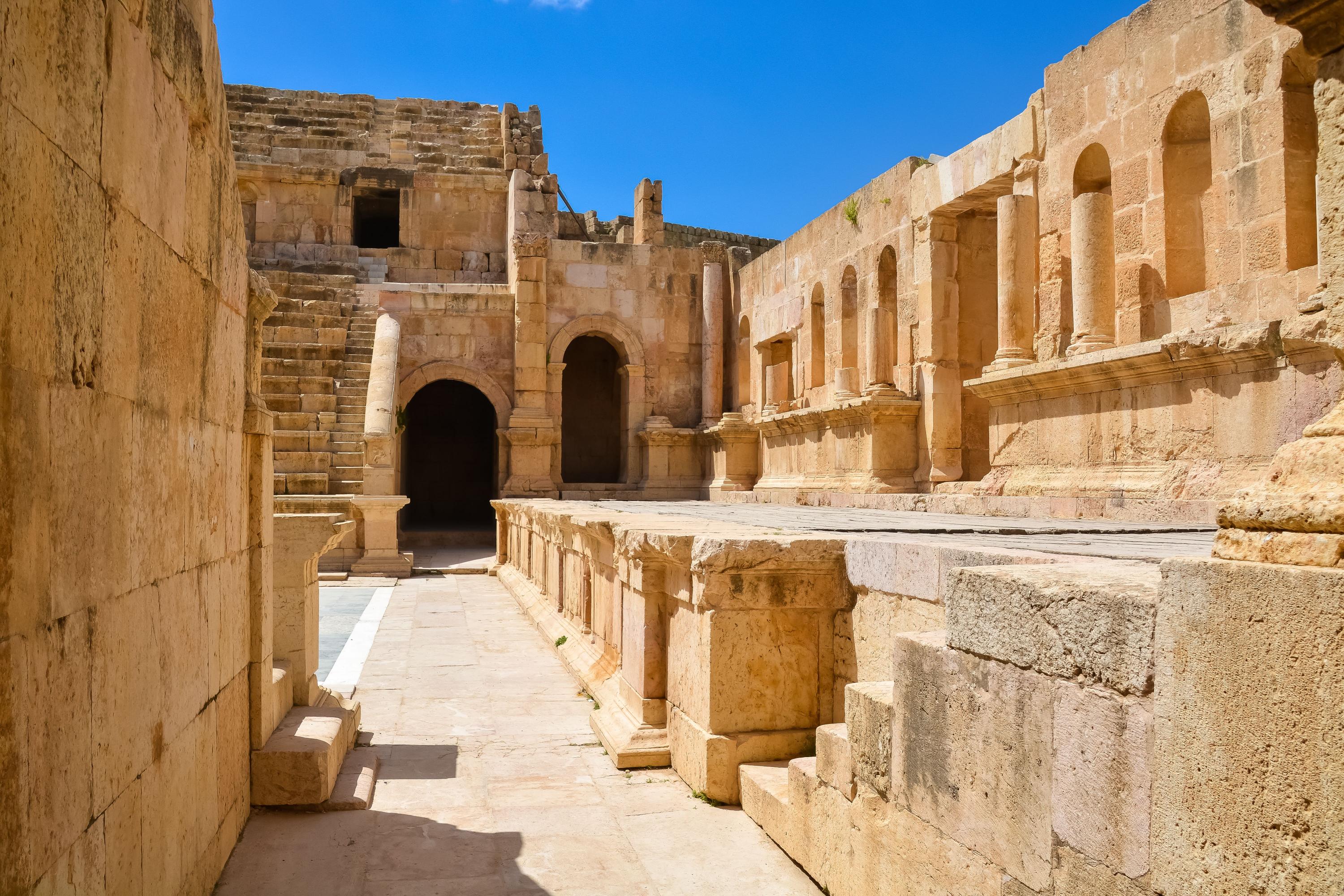
The Treasury Petra
Experiencing Jordan's Masterpiece in Unparalleled Luxury
8 min read
Category : AttractionsDestination : JordanThe Treasury in Petra, known locally as Al-Khazneh, stands as one of humanity's most extraordinary architectural achievements, a magnificent façade carved with remarkable precision directly into rose-colored sandstone cliffs over 2,000 years ago. For the discerning luxury traveler, witnessing this masterpiece of ancient Nabataean craftsmanship offers a profound encounter with human ingenuity that transcends time. The Treasury's elaborately carved columns, friezes, and figurative elements create an imposing 40-meter-high façade that captures the imagination and serves as Jordan's most iconic image, one that has enthralled sophisticated travelers for centuries.
From Attractions in Amman to Petra's Crown Jewel: The Ultimate Luxury Journey
While exploring the attractions in Amman provides an excellent introduction to Jordan's rich heritage, true connoisseurs understand that the journey to the treasury in Petra represents the pinnacle of any luxury itinerary in the region. Beginning your expedition in Amman offers the opportunity to acclimate to Jordan's distinctive atmosphere while enjoying the capital's sophisticated accommodations before venturing southward to Petra.
Discerning travelers often arrange private transportation from Amman to Petra, with knowledgeable guides providing context about Jordan's fascinating landscape and history during the approximately three-hour journey. This approach allows you to transition seamlessly from exploring the attractions in Amman, such as the Citadel and Roman Theater, to experiencing the incomparable majesty of the Treasury Petra in a single cohesive narrative of Jordan's remarkable heritage.
The Profound Significance of the Treasury, Petra
When contemplating what the significance of the treasury in Petra is, one must appreciate multiple dimensions of its importance. Architecturally, it represents the pinnacle of Nabataean craftsmanship, demonstrating their remarkable ability to create precisely detailed classical façades directly into living rock. The Treasury exhibits Hellenistic architectural influences blended with Nabataean elements, showcasing the cosmopolitan nature of this ancient trading civilization that controlled valuable routes connecting Arabia, Egypt, and the Mediterranean.
Historically, the treasury Petra serves as a testament to the prosperity and sophistication of the Nabataean Kingdom, which flourished from approximately the 4th century BCE until Roman annexation in 106 CE. As Petra functioned as a crucial hub along incense and spice trade routes, the Treasury's elaborate design and prominent position demonstrated the wealth and cultural refinement of this mercantile society.
For contemporary Jordan, the Treasury holds immense cultural and economic significance as the country's most recognizable landmark and premier tourism attraction. Its appearance in films like Indiana Jones and the Last Crusade elevated its international profile, transforming it into a global icon that represents both Jordan's heritage and its appeal as a luxury destination.
The Interior Experience: Can You Go Inside the Treasury in Petra?
A frequent question among sophisticated travelers is whether one can go inside the treasury in Petra. While the spectacular façade suggests an equally elaborate interior, the actual chamber behind the entrance is relatively modest, a simple square room with smaller chambers extending from it. Currently, regular visitors cannot enter the Treasury's interior, as authorities restrict access to preserve the structure.
However, exclusive arrangements occasionally become available for special academic or diplomatic delegations. For the truly discerning traveler with significant connections, private tour operators specializing in ultra-luxury experiences sometimes secure extraordinary permission for brief, guided interior visits as part of comprehensive VIP packages. These rare opportunities typically involve substantial philanthropic contributions to Petra conservation efforts.
For most luxury travelers, the most exclusive experience remains witnessing the Treasury from the privileged perspective of the overlook, a vantage point requiring a separate hike that rewards efforts with an extraordinary view of the Treasury from above, a perspective few visitors experience.
The Approach: A Journey Through Time
When planning your visit, understanding how long it takes to walk to the treasury in Petra helps create appropriate expectations. From the main entrance, the journey to the Treasury covers approximately 2 kilometers through the Siq, a dramatic natural sandstone canyon with walls rising up to 180 meters. At a leisurely pace appropriate for absorbing the atmospheric transition and appreciating the gradually revealing geological wonders, most visitors require 30 to 45 minutes to complete this walk.
For the luxury traveler, several exclusive options enhance this approach. Early morning private access permits, arranged through premium tour operators, allow you to experience the Siq and first glimpse the Treasury in serene tranquility before regular visitors arrive. This extraordinary opportunity to witness the first rays of sunlight illuminating the rose-colored façade without crowds represents perhaps the most authentic way to appreciate this wonder.
Alternatively, special evening experiences such as "Petra by Night" offer a distinctly atmospheric encounter with the Treasury, illuminated by thousands of candles under a star-filled desert sky, though discerning travelers should arrange private viewings rather than joining the standard group experience.
Archaeological Truth: Who Is Buried in the Treasury in Petra?
Despite its common name suggesting a repository for valuables or a tomb, the question of who is buried in the treasury in Petra reflects a fundamental misconception. Archaeological evidence indicates that the Treasury was not designed as a tomb at all but rather served as a monumental temple or royal reception hall. No burials have been discovered within The Treasury, and its design aligns more closely with ceremonial structures than funerary monuments.
The name "Treasury" derives from a local Bedouin legend suggesting that an Egyptian pharaoh stored treasure in the urn carved at the top of the façade. Bullet marks visible on this urn testify to past attempts to release these imagined riches. For today's visitor, understanding this historical context enriches appreciation of the Treasury of Petra beyond its spectacular visual impact.
Exclusive Experiences Beyond The Treasury
While the Treasury justifiably captures immediate attention, sophisticated travelers recognize that Petra encompasses much more, with over 800 documented structures spread across 264 square kilometers. Luxury itineraries should include the magnificent Monastery (Ad-Deir), which rivals the Treasury in grandeur but requires a challenging ascent of 800 steps, though private operators can arrange alternative routes via 4x4 vehicles for part of the journey.
After exploring Petra, retreat to one of the premium accommodations nearby, such as the Mövenpick Resort Petra or Petra Marriott Hotel, where you can reflect on the day's experiences while enjoying refined hospitality. For the ultimate luxury experience, consider the exclusive Bubble Luxotel Petra, offering transparent dome accommodations with spectacular desert views and unparalleled privacy.
Connecting Your Petra Experience with Attractions in Amman
Most refined itineraries combine the Treasury Petra experience with exploration of the attractions in Amman before or after. This creates a comprehensive understanding of Jordan's historical narrative, from the capital's Roman and Islamic heritage to Petra's Nabataean splendors. Consider arranging private transportation between destinations with stops at significant sites like the crusader castle of Kerak en route.
In Amman, luxury accommodations such as the Four Seasons Hotel Amman or The St. Regis Amman provide sophisticated urban retreats from which to explore the city's attractions, including the Citadel, Roman Theater, and Jordan Museum, which houses artifacts providing context for your Petra experience.
Planning Your Treasury Petra Experience
For the most refined experience of the treasury Petra, consider visiting between March and May or September and November, when temperatures remain pleasant and crowds diminish. Arrange private guided tours with archaeologists specializing in Nabataean civilization who can provide scholarly insights beyond standard narratives.
Allow at least two full days to properly appreciate Petra's wonders, with an early morning dedicated specifically to the Treasury when light conditions create the most dramatic effect on the rose-colored façade. Complement your exploration with a curated dining experience featuring elevated Jordanian cuisine, perhaps enjoying a sunset dinner overlooking the ancient city.
The treasury Petra represents not merely an archaeological wonder but a profound testimony to human artistic achievement, one best appreciated through thoughtfully curated luxury experiences that reveal its many dimensions while providing the comfort and exclusivity discerning travelers expect.
Related Articles

What to Do in Amman?
Wondering what to do in Amman Discover a cultured mix of ancient sites, fine dining, and cultural gems that make Jordan’s capital a must-visit destination.

Magnificent Things to See in Amman
Explore the top things to see in Amman, where timeless history meets modern luxury. Uncover hidden gems and experience the heart of Jordan’s vibrant capital.

Exquisite Places to Visit in Amman
Places to visit in Amman offer a perfect introduction to Jordan’s charm, where history meets elegance. Immersion into the heart of the capital today.
